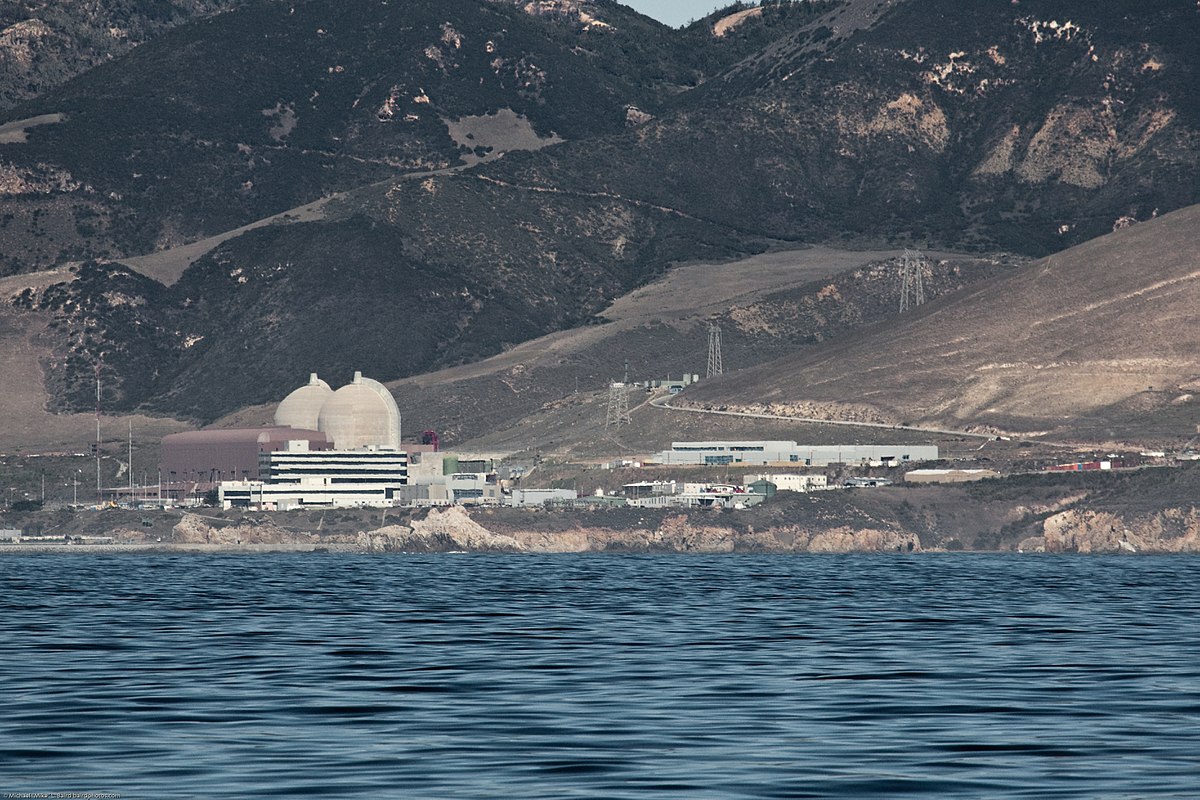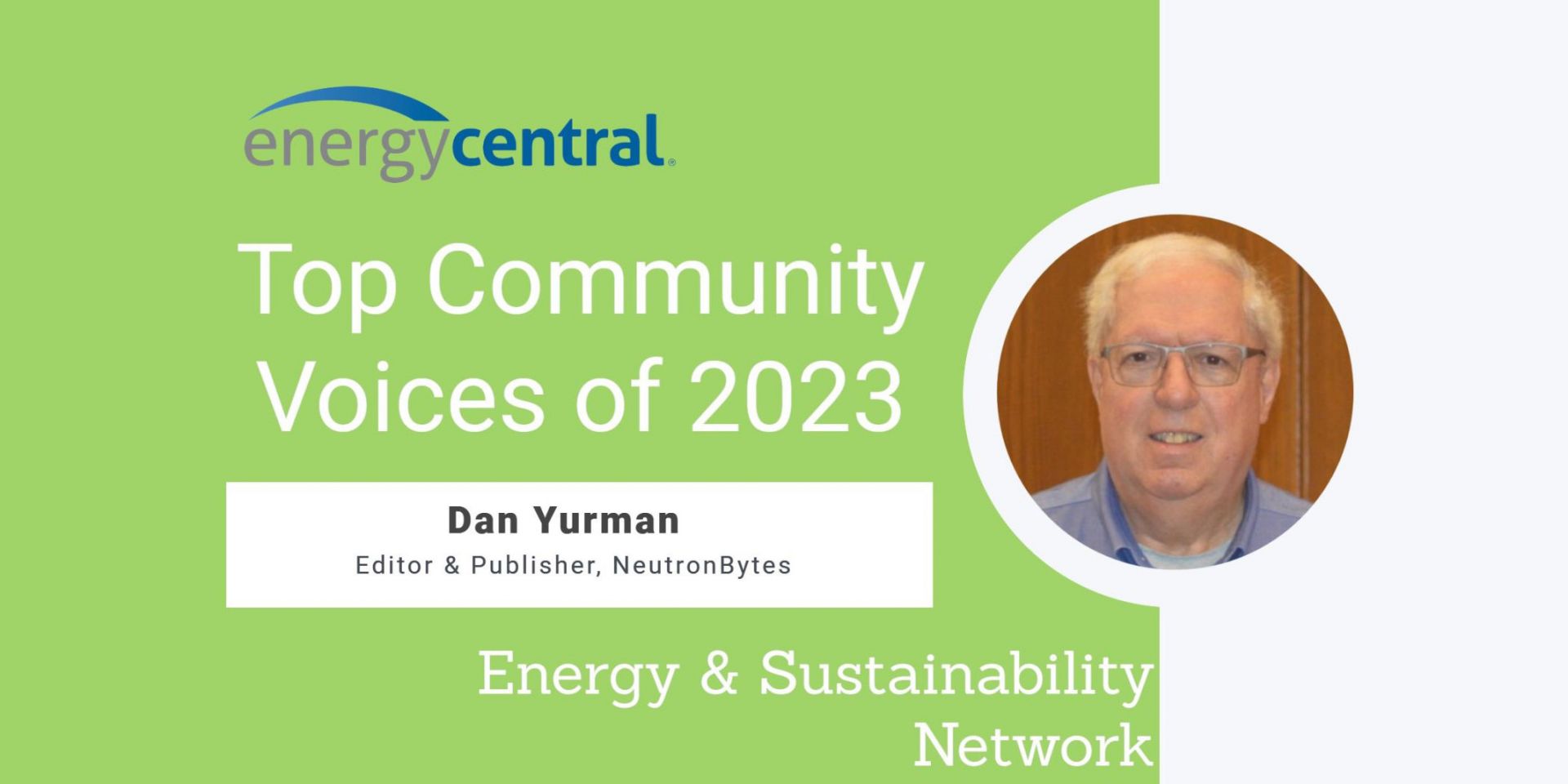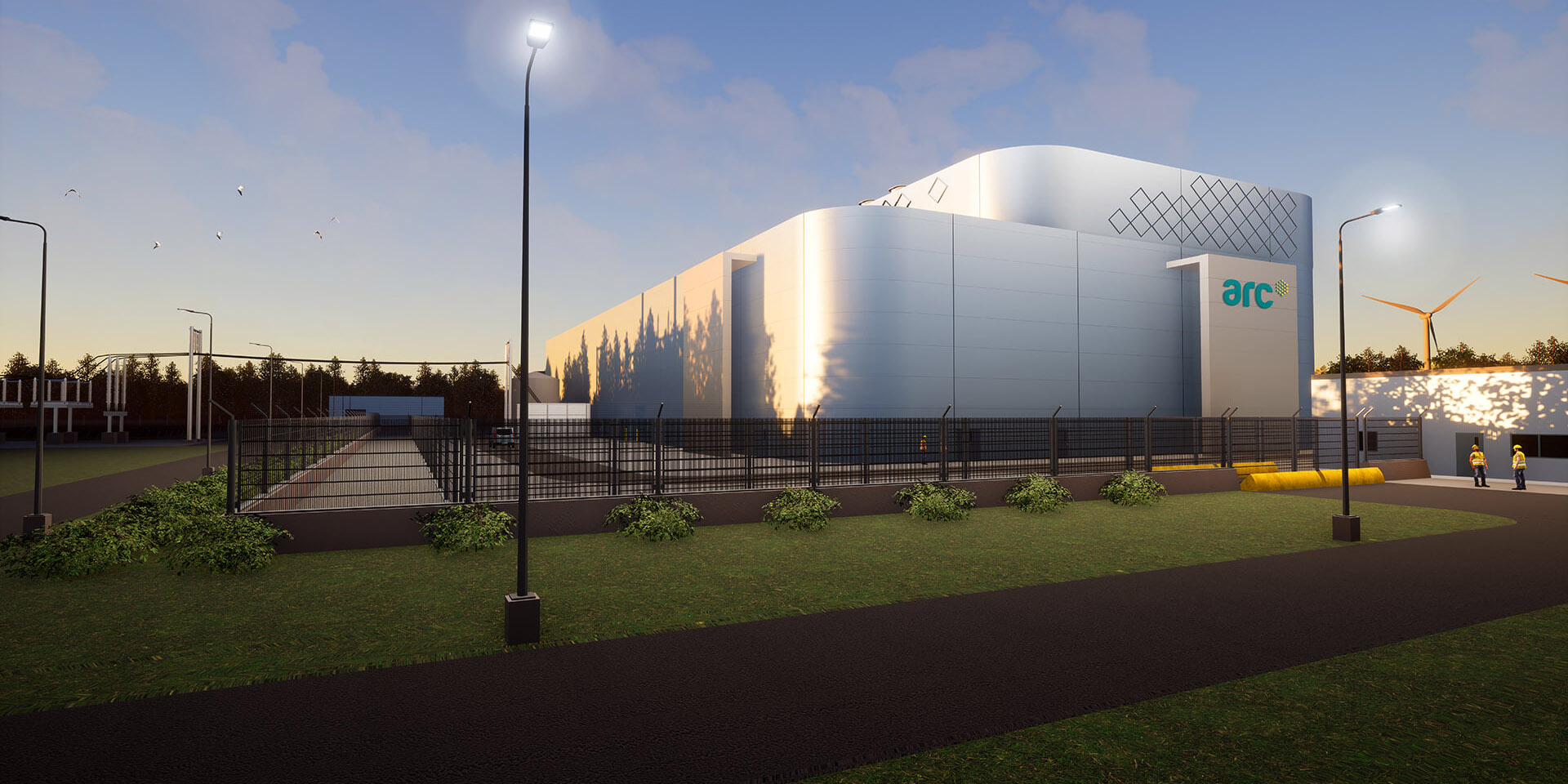Diablo Canyon license renewal slated for NRC review

The Nuclear Regulatory Commission has accepted for review Pacific Gas and Electric’s formal request to extend Diablo Canyon nuclear power plant’s operating licenses for another 20 years.

A message from Goodway Technologies
Optimizing Maintenance Strategies in Power Generation: Embracing Predictive and Preventive Approaches

The Nuclear Regulatory Commission has accepted for review Pacific Gas and Electric’s formal request to extend Diablo Canyon nuclear power plant’s operating licenses for another 20 years.

EDF Energy’s new nuclear build megaproject at Hinkley Point C last Friday moved forward—or, more literally, upward then downward—when workers, with a substantial assist from Big Carl, the world’s largest crane, successfully lifted the C1 reactor building’s 47-meter-wide, 245-ton steel dome into place.

The same high energy density that makes nuclear energy a clean and efficient source of power could make it a good alternative to defend the planet against catastrophic asteroid impacts. NASA demonstrated the world’s first planetary defense technology in September 2022 by deliberately crashing a “kinetic impactor”—a heavy, box-like spacecraft—into an asteroid. Now, researchers at Lawrence Livermore National Laboratory have developed a new tool to model how a nuclear device could deflect—or even destroy—an asteroid threat to Earth in a more efficient and controlled way.

Powering our Economy and the World with Clean Energy—Our Path Forward to 2035 is a new document released by the province of New Brunswick, Canada, that “outlines a 12-year energy road map and supporting strategies for how the energy landscape will transition in New Brunswick and how we will achieve our energy reliability, sustainability, and affordability goals.”
A message at the beginning of the document—signed by the New Brunswick premier Blaine Higgs and minister of natural resources and energy development Mike Holland—notes the importance of engaging New Brunswickers on the province’s energy future. “We will be forming an energy transition working group” to gather input from provincial stakeholders, the letter states.

Unit 4 at India’s Kakrapar nuclear plant has achieved initial criticality, Nuclear Power Corporation of India Ltd. (NPCIL) has announced. This latest milestone in the country’s ambitious nuclear power program was reached early on December 17.
![]() Here is a recap of industry happenings over the past month:
Here is a recap of industry happenings over the past month:
SMR power barge designs approved
The American Bureau of Shipping has approved in principle the designs for an offshore small modular reactor power barge from Korea Shipbuilding and Offshore Engineering and Kepco Engineering and Construction. Another collaborator on the project is the Liberian International Ship and Corporate Registry, which assisted ABS in design reviews. The SMR barges are designed to provide electricity for islands and other remote communities.

Dan Yurman, the editor and publisher of the Neutron Bytes blog and member of the American Nuclear Society, has been honored by the online Energy Central community as one of the “Top Voices” in its Energy & Sustainability Network for 2023.

Fanning
Tom Fanning, Southern Company board executive chairman and the man who helmed the firm during construction of the two new AP1000 reactors at Georgia’s Vogtle nuclear plant, will retire December 31, Southern has announced. His board seat will be filled by Chris Womack, who replaced Fanning as Southern’s president and chief executive officer earlier this year.
Elected by the Southern board in July 2010, Fanning became company president in August 2010 and assumed the additional responsibilities of chairman and CEO that December. During his more than 43 years with Southern, Fanning held executive roles across various business disciplines, including finance, strategy, international business development, and technology. As president, chairman, and CEO of Southern, he received numerous accolades, including being named one of the most influential leaders in the energy industry in the past 25 years.
ANS awarded Fanning a Presidential Citation at this year’s Annual Meeting in Indianapolis, Ind.

The California Public Utilities Commission (CPUC) voted last Thursday to extend the life of Diablo Canyon an additional five years. The decision was the final step in the extension of the state's last remaining nuclear power plant, whose two reactors will now operate until at least 2029 and 2030, respectively, instead of closing in 2024 and 2025.
Naarea, a French start-up company that is developing a new nuclear power reactor, has brought on Dallas, Texas–based Jacobs to assist with nuclear safety as well as control, instrumentation, mechanical, and process engineering disciplines.
The U.S. Air Force Research Laboratory’s (AFRL) Space Vehicle Directorate has selected Westinghouse, Northrop Grumman, and Astrobotic for an advanced space research program that aims to power satellites with nuclear energy.

The United Nations' Climate Change Conference of Parties (COP28) in Dubai, United Arab Emirates, closed on December 13 after debate on a “global stocktake” pushed negotiations a full day past the scheduled end date. Though advocates hoping for a phaseout of fossil fuels were ultimately disappointed and must settle for “transitioning away,” another first—after 30 years of global climate conferences—is the inclusion of nuclear energy among the zero-emissions and low-emissions technologies that still could, if deployment is accelerated, support deep reductions in greenhouse gas emissions to limit global warming to 1.5°C.

The Department of Energy recently announced that it was establishing three inertial fusion energy (IFE) hubs and funding them with a total of $42 million over four years. The leaders of the three hubs selected by competitive peer review—Colorado State University, Lawrence Livermore National Laboratory, and the University of Rochester—all issued press releases touting the attributes and plans of their facilities and their research collaborators on the same day—December 7.
The Nuclear Regulatory Commission is discontinuing probation on Mississippi’s program for regulating the use of radioactive materials. According to the NRC, the decision is the result of the agency’s review earlier this year that found the state has made significant progress in addressing several areas of unsatisfactory performance.
Cloud cover cuts solar generation, and on calm days wind turbines won’t spin. When cloudy and windless conditions coincide for hours or days, the result is called a compound energy drought. Pacific Northwest National Laboratory recently found that these energy droughts can last nearly a week in some parts of the country and that they overlap with periods of peak grid demand more often than would be expected by chance.

Kairos Power has received the go-ahead from the Nuclear Regulatory Commission to build its Hermes demonstration reactor at the Heritage Industrial Park in Oak Ridge, Tenn., making it the first non–light water reactor approved for construction in the United States in more than 50 years.

Small modular reactor developer ARC Clean Technology, Canadian utility New Brunswick Power, and nuclear plant operator Korea Hydro & Nuclear Power have signed a memorandum of understanding to explore opportunities for commercializing ARC technology in Canada, South Korea, and the United States, as well as in other regions where KHNP has business operations.
Leaders of five nations that collectively represent 50 percent of the world’s uranium conversion and enrichment capacity—the United States, Canada, Japan, France, and the United Kingdom—are making a habit of meeting on the sidelines of global climate talks to pledge their commitment to securing the nuclear fuel supply chain. On December 7 at the Net Zero Nuclear Summit—an event held in Dubai, United Arab Emirates, during the UN Climate Change Conference, or COP28—representatives of those nations announced plans to “mobilize at least $4.2 billion” in government and private investment in enrichment and conversion capacity. The commitment expands on an initial civil nuclear fuel security agreement that the so-called Sapporo 5 reached in April 2023, when they met (as now, on the sidelines) during a G7 Ministers’ Meeting on Climate, Energy, and Environment in Sapporo, Japan.

Carson Noack is a busy young man with a clear vision of the future of energy. The 23-year-old undergraduate is slated to receive his bachelor’s degree in mechanical engineering from Abilene Christian University (ACU) in 2024. He’s also a researcher in the university’s Nuclear Energy eXperimental Testing (NEXT) Laboratory, which has been making news with its plans to build the first new research reactor in the United States in more than 30 years—the Molten Salt Research Reactor (MSRR).
Illinois Gov. J. B. Pritzker returned to the good graces of the nuclear community last Friday, signing H.B. 2473, a bill that partially lifts the state’s decades-long moratorium on new nuclear power builds by permitting the construction of small modular reactors.
Pritzker had vetoed similar legislation, S.B. 76, in August, saying in a veto message that the bill included an overly broad definition of “advanced reactors,” which would “open the door to the proliferation of large-scale nuclear reactors that are so costly to build that they will cause exorbitant ratepayer-funded bailouts.” Pritzker had also asserted that S.B. 76 lacked “regulatory protections or updates to address the health and safety of Illinois residents who would live and work around these new reactors.”